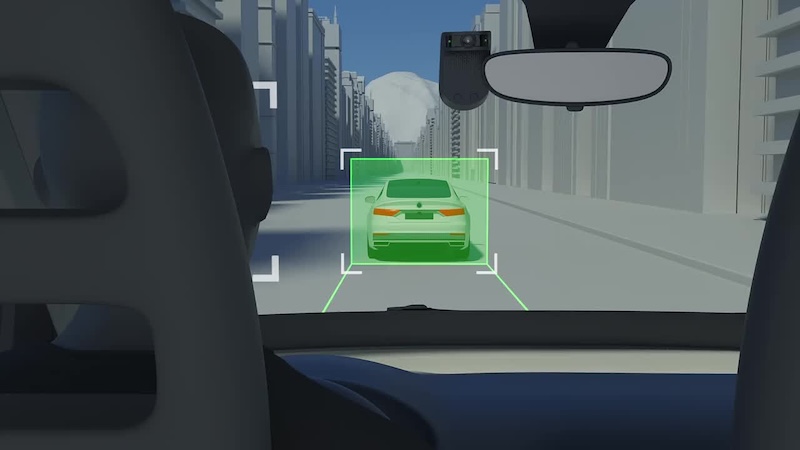As fleets and logistics operators accelerate toward automation, the line between assisted driving and autonomy is becoming increasingly blurred.
Few companies illustrate this transition more clearly than Nauto, a Silicon Valley-based developer of artificial intelligence software that helps commercial vehicles predict and prevent collisions in real time.
Founded by Stanford professor and entrepreneur Stefan Heck, Nauto has spent the past several years developing what it calls a predictive safety platform – an AI system that looks several seconds ahead to anticipate risk before it occurs.
Instead of simply recording incidents for later analysis, the company’s technology continuously interprets what is happening both inside and around the vehicle. It detects pedestrians, cyclists, and traffic behavior, and alerts drivers to danger as it unfolds – all while keeping data processing on board to preserve driver privacy.
This week, Nauto announced new independent validation of its approach. A study conducted by the Virginia Tech Transportation Institute (VTTI) found that the company’s Predictive Risk Fusion system can identify dangerous driving situations sooner when drivers are distracted, giving them critical extra time to avoid collisions.
The findings add weight to Nauto’s central claim: that the future of road safety lies in prevention, not post-event coaching.
In this interview, Stefan Heck, Nauto’s CEO, explains how the company’s predictive AI works in practice, what makes it different from traditional telematics or dashcam solutions, and how it is helping fleets cut collisions by up to 80 percent.
He also discusses the challenges of detecting subtle risks like distracted pedestrians and cyclists, and outlines how Nauto’s technology could eventually extend beyond road transport into aviation, rail, and other mobility domains.
Interview with Stefan Heck

Robotics & Automation News: Nauto emphasizes real-time AI to prevent accidents before they happen, rather than coaching drivers after the fact. Can you explain how your system works in practice and what sets it apart from traditional telematics or dashcam solutions?
Stefan Heck: Nauto is different from telematics or other dash cam solutions. It is a predictive safety platform built to help fleets avoid collisions entirely, protect their drivers, and transform road safety at scale.
Our AI transforms vehicle safety by moving from reaction to prevention. Instead of simply recording events or coaching drivers after an incident, our technology recognizes and predicts risks in real time before a collision can occur.
Embedded directly in the vehicle, either through a dash cam or as software, Nauto’s AI continuously interprets what is happening inside and around the vehicle. It understands not just vehicle dynamics, but context, spotting pedestrians, cyclists, traffic lights, and driver behaviors that signal distraction or fatigue.
The key difference is foresight. Our AI looks several seconds ahead to anticipate what is about to happen, for example a pedestrian stepping into the street or a vehicle suddenly braking, and instantly alerts the driver to act. That ability to see and think ahead is what prevents accidents rather than just documenting them.
Because all processing happens on board, drivers can receive real time feedback and warnings without compromising privacy through continuous video recording. No recording or cloud upload is required for Nauto to operate.
R&AN: Pedestrian safety remains a critical challenge, especially in dense urban environments where vehicles, cyclists, and people are all sharing limited space. How does Nauto’s technology address these complex scenarios?
SH: Pedestrian safety is one of the areas where Nauto’s AI delivers exceptional value. Our system is trained to spot pedestrians and cyclists with very high precision, even in crowded, unpredictable environments.
As an example, it can recognize someone stepping out from between parked cars or notice just a leg or a head before the rest of the person is visible while getting out of a car. That early detection gives the driver those crucial seconds to react and avoid a collision.
What sets Nauto apart is how our AI processes everything happening at once. It does not just identify one thing on the road, it understands how different risks connect.
A pedestrian crossing might cause the car ahead to brake suddenly, creating a new hazard. Our system predicts those chain reactions in real time and warns the driver before they turn into incidents.
R&AN: Fleets are under pressure not only to reduce accidents but also to lower costs and liability. What evidence can you share about the impact Nauto has had on collision reduction, insurance claims, or total cost of ownership?
SH: On average, our customers see between 50 and 80 percent fewer collisions after adopting Nauto, along with a comparable reduction in insurance claims tied to vehicle incidents.
The reason is simple. By preventing high risk events before they occur, fleets not only protect their drivers but also dramatically reduce liability exposure.
Preventing one severe crash, especially those involving pedestrians or cyclists, can offset the entire cost of the system many times over. Those are the incidents that drive the biggest claims, the most downtime, and the highest settlements.
What makes Nauto’s impact even more powerful is the speed of return. Fleets with higher risk profiles typically see payback in about four months, while average fleets achieve it in six to seven. Across our customer base, ROI (return on investment) ranges from 200 to 600 percent within the first year.
So this is not just about safety performance. It is about transforming fleet economics. Fewer collisions mean fewer claims, lower repair and insurance costs, and less time lost to investigations or vehicle downtime. Nauto helps fleets operate more safely and more efficiently at the same time.
R&AN: Many of your customers operate large commercial fleets. How does Nauto’s AI scale across different vehicle types, geographies, and driving environments?
SH: Nauto’s AI is built to scale seamlessly across different fleets, vehicle types, and environments. The same core technology operates in everything from small three-wheelers in Asia to sedans, pickup trucks, and large tractor trailers on American highways.
When installed, the system connects through the vehicle’s OBD port or VIN, automatically identifying the vehicle type and adjusting for its size, weight, and performance characteristics.
Today, Nauto’s footprint spans four continents. We are active across North America, Europe, parts of Asia including Japan, and are expanding rapidly into South America and the Middle East.
Our customers run vehicles in a wide range of conditions, from dense urban centers like New York, London, and Tokyo to rural and industrial areas where fleets support utilities, oil and gas, and other field operations.
The same AI that performs in a busy downtown also operates reliably in snow, desert heat, and mountainous terrain. That range is possible because we constantly train our system on what we call edge cases, situations where visibility, weather, or lighting make driving more complex.
By continuing to improve performance in these real-world conditions, we ensure that Nauto can deliver safety and reliability anywhere fleets operate.
R&AN: From an engineering standpoint, what are the biggest technical challenges in detecting subtle but critical risks – like a distracted pedestrian or a cyclist in a blind spot – and how is Nauto overcoming them?
SH: From an engineering standpoint, one of the biggest challenges in detecting subtle but critical risks is maintaining consistent visibility and awareness.
Nauto’s technology addresses this through predictive risk fusion, an AI approach that not only recognizes objects but also remembers their presence.
If a pedestrian walks behind a parked car, the system retains that context and continues to account for the potential risk even when the person is no longer visible. Much like how a child learns object permanence, our AI understands that unseen hazards may still be there.
Another challenge is handling edge cases such as poor lighting, heavy rain, glare, or partially hidden traffic signs. These are conditions where many vision systems struggle.
We continuously collect and train on real-world edge cases, allowing our algorithms to perform accurately even in difficult or unpredictable environments.
Finally, making the AI reliable across every speed, lighting condition, and vehicle type requires ongoing optimization and validation. While no technology can prevent every collision, we are constantly improving performance through continuous learning and refinement.
R&AN: Looking ahead, where do you see Nauto’s technology evolving: is it about refining driver assistance, moving closer toward autonomy, or expanding into new forms of mobility?
SH: First of all, we are working toward expanding globally so that more fleets and drivers can benefit from safer roads and fewer collisions.
We are deepening integration across the mobility ecosystem. With insurers, we are embedding our risk detection and prevention technology directly into coverage so safer driving brings real financial benefits.
With automakers, we are integrating Nauto AI and software into the vehicle itself, which reduces the need for additional hardware and brings intelligent driver assistance closer to the core systems.
At the same time, we are helping advance higher levels of autonomy. We are collaborating with manufacturers on Level 2 and Level 2 plus vehicles and contributing secondary safety systems for Level 4 platforms.
We also see our technology expanding beyond road vehicles. Today we focus on road fleets, but we can imagine it eventually going off road as well. We have already had interest from airlines and from railroads that face similar safety challenges.
Railroads experience collisions at crossings where trains and cars interact, so being able to detect an inattentive driver or a blockage on the tracks is the same kind of problem our AI is built to solve. Over time, we expect this technology to extend to lighter vehicles too.
Today we support small cars and three wheelers, but you can imagine a scooter with some version of this technology as computing power and battery capacity continue to improve.
Ultimately, our vision is broader than the vehicle. As streets become safer and collisions rarer, cities can blend more types of mobility on the same roads. Cars, cyclists, and pedestrians can coexist more safely, and urban life can evolve toward a more human-centered experience where movement is fluid and shared spaces thrive.

